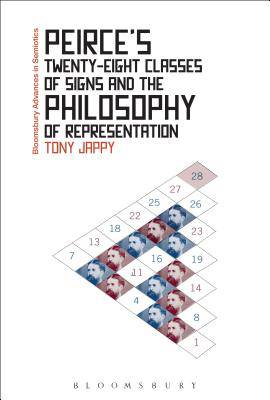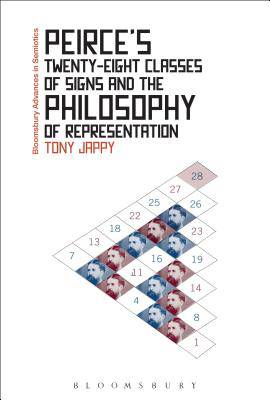
- Afhalen na 1 uur in een winkel met voorraad
- Gratis thuislevering in België vanaf € 30
- Ruim aanbod met 7 miljoen producten
- Afhalen na 1 uur in een winkel met voorraad
- Gratis thuislevering in België vanaf € 30
- Ruim aanbod met 7 miljoen producten
Zoeken
Peirce's Twenty-Eight Classes of Signs and the Philosophy of Representation
Rhetoric, Interpretation and Hexadic Semiosis
Tony Jappy
€ 81,45
+ 162 punten
Uitvoering
Omschrijving
The major principles and systems of C. S. Peirce's ground-breaking theory of signs and signification are now generally well known. Less well known, however, is the fact that Peirce initially conceived these systems within a 'Philosophy of Representation', his latter-day version of the traditional grammar, logic and rhetoric trivium. In this book, Tony Jappy traces the evolution of Peirce's Philosophy of Representation project and examines the sign systems which came to supersede it.
Surveying the stages in Peirce's break with this Philosophy of Representation from its beginnings in the mid-1860s to his final statements on signs between 1908 and 1911, this book draws out the essential theoretical differences between the earlier and later sign systems. Although the 1903 ten-class system has been extensively researched by scholars, this book is the first to exploit the untapped potential of the later six-element systems. Showing how these systems differ from the 1903 version, Peirce's Twenty-Eight Classes of Signs and the Philosophy of Representation offers an innovative and valuable reinterpretation of Peirce's thinking on signs and representation.
Exploring the potential of the later sign-systems that Peirce scholars have hitherto been reluctant to engage with and extending Peirce's semiotic theory beyond the much canvassed systems of his Philosophy of Representation, this book will be essential reading for everyone working in the field of semiotics.
Surveying the stages in Peirce's break with this Philosophy of Representation from its beginnings in the mid-1860s to his final statements on signs between 1908 and 1911, this book draws out the essential theoretical differences between the earlier and later sign systems. Although the 1903 ten-class system has been extensively researched by scholars, this book is the first to exploit the untapped potential of the later six-element systems. Showing how these systems differ from the 1903 version, Peirce's Twenty-Eight Classes of Signs and the Philosophy of Representation offers an innovative and valuable reinterpretation of Peirce's thinking on signs and representation.
Exploring the potential of the later sign-systems that Peirce scholars have hitherto been reluctant to engage with and extending Peirce's semiotic theory beyond the much canvassed systems of his Philosophy of Representation, this book will be essential reading for everyone working in the field of semiotics.
Specificaties
Betrokkenen
- Auteur(s):
- Uitgeverij:
Inhoud
- Aantal bladzijden:
- 224
- Taal:
- Engels
- Reeks:
Eigenschappen
- Productcode (EAN):
- 9781350074392
- Verschijningsdatum:
- 28/06/2018
- Uitvoering:
- Paperback
- Formaat:
- Trade paperback (VS)
- Afmetingen:
- 170 mm x 244 mm
- Gewicht:
- 367 g

Alleen bij Standaard Boekhandel
+ 162 punten op je klantenkaart van Standaard Boekhandel
Beoordelingen
We publiceren alleen reviews die voldoen aan de voorwaarden voor reviews. Bekijk onze voorwaarden voor reviews.











